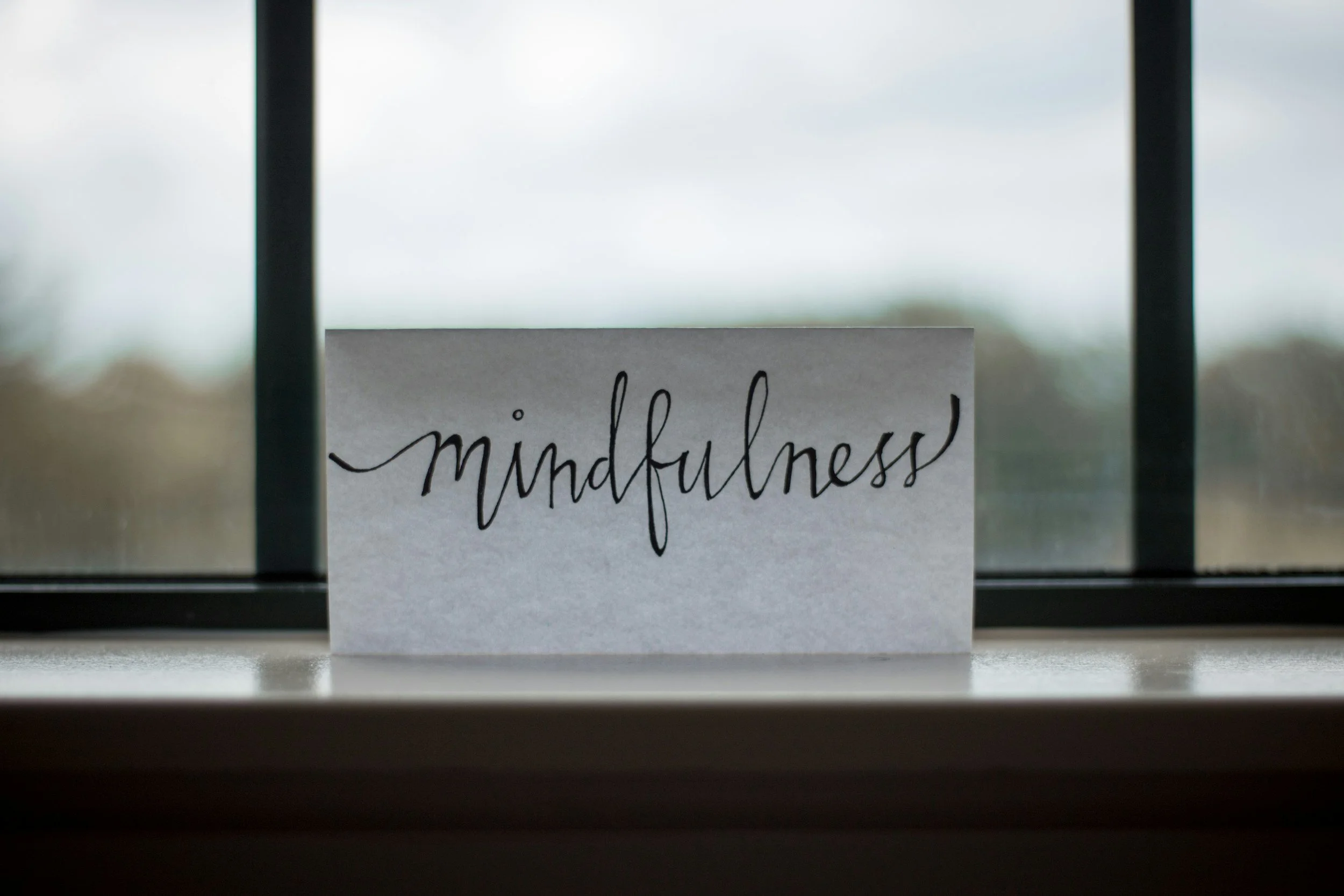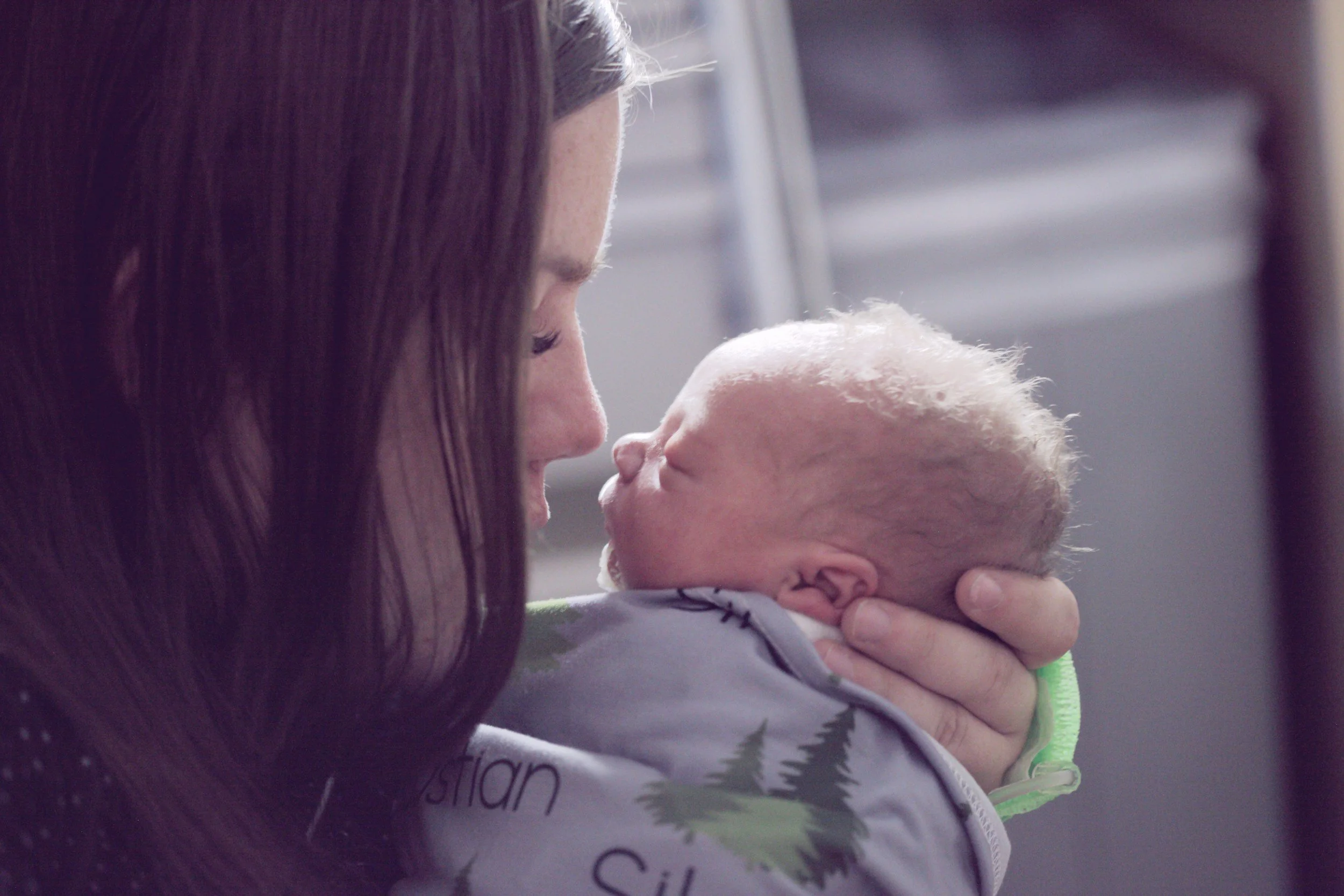More Than Just a Feeling: The Brain and Body on High Alert
This post goes beyond the typical conversation about anxiety to explore its neurological and physiological roots. It delves into the brain's alarm system—the amygdala—and how it triggers the body's fight-or-flight response, leading to a cascade of physical symptoms. The post explains how this mind-body connection can create a relentless feedback loop and offers a new perspective on anxiety as a predictable biological response, not just a feeling. It's a must-read for anyone looking to understand why their body feels like it's on high alert.
A Different Kind of Checklist: Preparing Your Mind for Parenthood
This blog post, "A Different Kind of Checklist: Preparing Your Mind for Parenthood," offers expectant parents a guide to preparing for a baby beyond the traditional physical tasks. It emphasizes that the transition to parenthood is also a major psychological and emotional event, known as the "fourth trimester." The post provides practical, often-overlooked advice on shifting mindset, preparing a supportive "village," nurturing the partnership, and proactively addressing mental health concerns like Perinatal Mood and Anxiety Disorders (PMADs) to build a foundation of resilience for the entire family.
Your Metamorphosis: Understanding Matrescence and the Mother You're Becoming
This blog post explores the concept of matrescence as a profound, lifelong psychological, social, and emotional transformation to motherhood. It clarifies how this process differs from the physical postpartum period, detailing the significant "rewiring" of a mother's brain and the emotional shifts she experiences. The post also highlights the first seven years as a critical window of transformation and offers compassionate self-support strategies for navigating this journey.
Building the Foundation: Understanding Paternal Perinatal Mental Health Care
This post addresses the often-overlooked mental health needs of fathers during the perinatal period. It highlights common symptoms of paternal depression and anxiety, and explores unique stressors like shifting identity and the pressure to be the "provider." The post outlines the core foundations of paternal mental health care, emphasizing the importance of validation, open communication, and professional support for the well-being of the entire family.
A Guide to Everyday Mindfulness: Finding Calm in the Little Things
This blog post, "A Guide to Everyday Mindfulness: Finding Calm in the Little Things," provides practical, simple strategies for weaving mindfulness into daily life. It explains that mindfulness is a way of living, not just a meditative practice, and offers techniques like a "Mindful Reset" and engaging the five senses during routine tasks. The post also addresses common barriers, such as a busy mind and feeling like you lack time, with supportive advice on how to overcome them to find a greater sense of calm and clarity.
Unspoken Sorrow: Navigating the Disenfranchised Grief of Infertility
This post addresses the silent and often unacknowledged grief of infertility. It explores how this unique grief impacts individuals and couples differently, highlighting how the emotional and physical workload can create rifts in a relationship. The post provides compassionate strategies for staying connected and communicating effectively during this difficult time, and emphasizes the vital role of professional support in processing grief and managing anxiety.
The Unique Stressors of Homeschooling: Finding Your Village and Seeking Support
This post explores the challenges faced by homeschooling families, such as social isolation, blurred boundaries, and the weight of responsibility. It emphasizes that a supportive "village" is essential and provides practical strategies for building one. The post also highlights how professional therapy can be a vital resource for both parents and children, offering a safe space to manage burnout, process guilt, and develop communication skills to create a resilient family environment.
Beyond the Baby Shower: Out-of-the-Box Ways to Support New Parents
This blog post, "Beyond the Baby Shower: Out-of-the-Box Ways to Support New Parents," offers a comprehensive guide for supporting new parents during pregnancy, birth, and the postpartum period. It provides creative, practical tips like hosting a "Nesting Party" and offering to be an "Errand Fairy." The post also delves into the emotional and physical recovery of parents, emphasizing the importance of holding space for their well-being, listening without judgment, and providing support that goes beyond focusing solely on the baby.
A Leap of Courage: Navigating Vulnerability and Overwhelm When Starting Therapy
"A Leap of Courage: Navigating Vulnerability and Overwhelm When Starting Therapy," addresses the anxiety and vulnerability often felt when beginning therapy. It explains why these feelings are normal and provides a step-by-step guide for preparing for the first sessions, including practical tips for easing nerves and maximizing the therapeutic experience. The post emphasizes that the therapeutic relationship is a crucial foundation for healing and that vulnerability is not a barrier, but a doorway to growth.
A Unique Kind of Bond: Navigating Your Therapeutic Relationship
This post explores the therapeutic relationship as a professional and temporary partnership for healing. It guides clients on how to find the right therapist by advocating for themselves, explains how to know when it's time to discontinue therapy, and outlines the importance of an intentional "gentle goodbye" rather than ghosting to honor the journey and celebrate personal growth.
Unseen Wounds: Understanding Trauma, PTSD, and the Path to Healing
"Unseen Wounds: Understanding Trauma, PTSD, and the Path to Healing," offers a comprehensive guide to understanding trauma. It clarifies the differences between post-traumatic reactions and a PTSD diagnosis and distinguishes between PTSD and Complex PTSD (C-PTSD), providing examples of each. The post explains how trauma reactions can have a delayed onset and manifest in daily life, and then outlines key differences in the healing process for PTSD versus C-PTSD. Finally, it provides actionable strategies for healing and highlights the crucial role of a trauma-informed therapist in recovery.
A Difficult Connection: When You Feel Disconnected From Your Baby
This post validates the feelings of guilt, shame, and disconnection that can arise during the postpartum period. It explores the reasons behind these feelings, including hormonal shifts, sleep deprivation, traumatic birth, and past trauma. The post provides gentle, practical steps to help mothers promote bonding with their newborn, such as skin-to-skin contact and sensory focus, and outlines key signs for when to seek professional support for a Perinatal Mood and Anxiety Disorder (PMAD).
Coping While They're Away: A Guide for Military Spouses and Service Members During Deployment
This post addresses the unique emotional challenges of deployment for both partners. It provides a comprehensive guide to building a strong foundation of self-care and routine, navigating common communication pitfalls like the "re-entry gap," and staying connected despite the distance. The post emphasizes the importance of a supportive "village" and highlights how professional therapy can help process complex emotions and prepare for reintegration.
A Woman's Right to Peace: How to Advocate for Yourself During Delivery
"A Woman's Right to Peace: How to Advocate for Yourself During Delivery," empowers women to protect their mental and emotional well-being during labor and postpartum. It explains the legal and medical rights that support a woman's choice to limit visitors and provides practical, step-by-step guidance on how to communicate those needs to family members and hospital staff. The post emphasizes that prioritizing a peaceful birthing space is a courageous act of self-care, crucial for a healthy delivery and the start of a new family.
A Compassionate Conversation: Your Guide to Suicide Prevention
This post aims to break the silence around suicide. It clarifies that suicide is a symptom of extreme pain, not a choice, and provides key takeaways for understanding this public health crisis. The post outlines vital warning signs to look for in a loved one, offers a step-by-step guide for having a compassionate conversation, and lists immediate resources like the 988 lifeline, empowering readers to help themselves or others in a time of need.
Unlocking Calm: Navigating Your Nervous System with Polyvagal Theory
This blog post introduces Polyvagal Theory as a framework for understanding the mind-body connection in anxiety and trauma. It defines the three states of the nervous system—Ventral Vagal, Sympathetic, and Dorsal Vagal—and provides a range of practical, evidence-based tools like breathwork, temperature change, and grounding to help you move from states of distress to a feeling of safety and calm. The post emphasizes that true healing involves supporting both the mind and the body.
The Blueprint of Your Mind: Understanding Core Beliefs and Schemas
"The Blueprint of Your Mind: Understanding Core Beliefs and Schemas," explores how deep-seated core beliefs formed in childhood act as a mental filter, impacting our thoughts, feelings, behaviors, and relationships in adulthood. It defines core beliefs and schemas, outlines how they develop, and provides a compassionate, step-by-step guide to identifying and challenging negatively skewed beliefs to build a new, healthier blueprint for mental wellness.
Unpacking "Mom Rage": How to Find Calm When You're Overwhelmed
"Unpacking Mom Rage: How to Find Calm When You're Overwhelmed," explains that "mom rage" is not a flaw, but a signal of an overwhelmed nervous system often stretched thin by chronic stress and a lack of support. It provides practical, in-the-moment strategies for calming your body's "fight or flight" response, as well as long-term guidance on nurturing yourself and your support system. The post highlights how professional support can help unpack the deeper roots of this rage and build lasting resilience.
Your Nightly Reset: The Relationship between Sleep and Mental Health
This blog post explores the powerful, two-way relationship between mental health and sleep. It details how conditions like anxiety, depression, and trauma can disrupt sleep patterns, creating a cycle that intensifies symptoms. The post offers practical guidance on promoting restful sleep through calming routines, optimizing your environment, and using breathwork, while also providing insight on when to seek professional support.
Tuning In: A Step-by-Step Guide to Noticing and Processing Your Emotions
"Tuning In: A Step-by-Step Guide to Noticing and Processing Your Emotions," provides a practical guide for moving from emotional overwhelm to understanding. It outlines a three-step process—The Mindful Pause, Emotional Release, and Integration—and offers specific strategies for those who struggle with labeling feelings or practicing self-compassion. The post emphasizes that this skill builds resilience and is a powerful tool for finding calm and clarity in daily life.




















